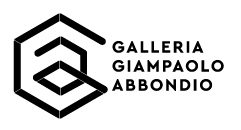U.N.A.
United Nations of Artists
un progetto di Collage-Collection Storage di Matteo Boetti
Massimo Kaufmann – Luca Pancrazzi – Marco Tirelli – Massimo Uberti
Galleria Giampaolo Abbondio – Piazza Giuseppe Garibaldi, 7 – Todi (PG)
Opening: 20 May, 2023
25 May – 31 July, 2023

Hauntology (crasi dei termini inglesi “haunting” e “ontology”, ovvero “fantasma, ossessione” e “ontologia”) è un concetto coniato da Jacques Derrida nel libro Spettri di Marx del 1993 e ripreso poi da Mark Fisher nel suo Spettri della mia vita. Scritti su depressione, hauntologia e futuri perduti del 2019.
Con l’hauntologia, Derrida si oppone al concetto tradizionale di ontologia, che definisce l’essere come una presenza sempre identica a se stessa, introducendo la figura dello spettro. Lo spettro è un’entità che non è mai pienamente presente, che non possiede l’essere in sé ma che, come sosteneva Martin Hägglund in Radical Atheism: Derrida and the Time of Life (2008), segna una relazione con ciò che non è più e con ciò che non è ancora. Per Mark Fisher, i fantasmi esercitano sul presente una “causalità spettrale”, proprio perché non possono essere pienamente presenti, essendo residui del passato o frammenti di un futuro mai esistito. Perciò, può essere definito hauntologico quel che, non essendo pienamente presente, gode di una sorta di ubiquità ed esercita sul presente un potere infestante e spettrale.
A partire dai contributi di importanti filosofi, saggisti e sociologi, il curatore Ivan Quaroni sviluppa il concetto di Hauntologia giungendo a formulare l’idea che la pittura possiede una natura intimamente hauntologica. La pittura, ogni forma di pittura, reitera il potere infestante degli spettri attraverso persistenze, ripetizioni e prefigurazioni che impediscono ogni forma di equazione col presente. Essa, infatti, si sottrae sistematicamente al potere bloccante della realtà, così come viene intesa dall’ontologia tradizionale. Si può dire che tutta la pittura è “fuor di sesto” in quanto non corrisponde mai pienamente alla realtà di cui è, piuttosto, parvenza, rappresentazione esteriore, simulacro e fantasmagoria.
A dare corpo a tali ragionamenti, il curatore ci conduce entro una fitta selva di rimandi, dialoghi e contrasti tra i lavori di un gruppo di pittori italiani molto differenti per generazione, esperienze e modalità di esecuzione, ma tutti, ciascuno a proprio modo, capaci di fermarsi di fronte al tempo, come sosteneva Georges Didi-Huberman, e generare una pittura autenticamente hauntologica: Giampiero Bodino, Giuditta Branconi, Danilo Bucchi, Pablo Candiloro, Maurizio Cannavacciuolo, Andrea Chiesi, Vanni Cuoghi, Alberto Di Fabio, Gianluca Di Pasquale, Fulvio Di Piazza, Elisa Filomena, Daniele Galliano, Miltos Manetas, Marco Neri, Nicola Verlato, Fulvia Zambon.
Hauntology (crasis of English terms “haunting” and “ontology”) is a concept coniated by Jacques Derrida in the book Spectres de Marx: from 1993 and taken up again by Mark Fisher in his Ghosts of My Life: Writings on Depression, Hauntology and Lost Futures from 2019.
With hauntology, Derrida opposes the traditional concept of ontology, which defines being as a presence always identical to itself, by introducing the figure of spectre. The spectre is an entity that is never fully present, that does not possess being itself but, as Martin Hägglund argued in Radical Atheism: Derrida and the Time of Life (2008), marks a relationship with what is no longer and with what is not yet. For Mark Fisher, ghosts exert a “spectral causality” on the present, precisely because they cannot be fully present, being residues of the past or fragments of a future that never existed. Therefore, what can be defined as hauntological is that which, not being fully present, enjoys a kind of ubiquity and exerts a haunting, spectral power over the present.
Starting with contributions from leading philosophers, essayists and sociologists, curator Ivan Quaroni develops the concept of Hauntology, arriving at the idea that painting possesses an intimately hauntological nature. Painting, every form of painting, reiterates the haunting power of spectres through persistences, repetitions and prefigurations that prevent any form of equation with the present. Indeed, it sistematically evades the blocking power of reality as understood by traditional ontology. It can be said that all painting is “out of joint” insofar as it never fully corresponds to reality of which it is, rather, a semblance, an exterior representation, a simulacrum and phantasmagoria.
To give substance to such reasoning, the curator leads us into a thicket of cross-references, dialogues and contrasts between the works of a group of Italian painters who differ greatly in terms of generation, experience and mode of execution, but who are all, each in their own way, capable of stopping in front of time, as Georges Didi-Huberman argued, and generating generating authentically hauntological painting: Giampiero Bodino, Giuditta Branconi, Danilo Bucchi, Pablo Candiloro, Maurizio Cannavacciuolo, Andrea Chiesi, Vanni Cuoghi, Alberto Di Fabio, Gianluca Di Pasquale, Fulvio Di Piazza, Elisa Filomena, Daniele Galliano, Miltos Manetas, Marco Neri, Nicola Verlato, Fulvia Zambon.
Ph. Michele Alberto Sereni












